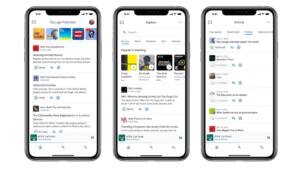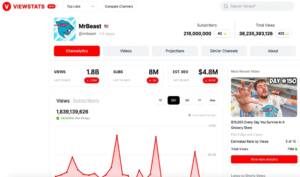Podcasts have become one of the most popular forms of content in recent years, with millions of people tuning in to listen to their favorite shows. Starting a podcast can be an exciting and rewarding experience, but it can also be overwhelming if you don’t know where to start.
In this post, we’ll guide you through the process of starting a podcast, from choosing your audio equipment and software to posting your podcast online and building your brand.
Step 1: Choose Your Equipment
The first step in starting a podcast is to choose the right equipment. While you don’t need to spend a fortune on gear, you do need to invest in some quality equipment if you want to produce a podcast that sounds professional. Here are the essential pieces of equipment you’ll need to get started:
Microphone: A good microphone is essential for producing high-quality audio. There are several types of microphones to choose from, but we recommend a dynamic microphone for podcasting. The Shure SM7B is a popular choice among podcasters, but it’s also quite expensive. Alternatively, the Audio-Technica ATR2100x-USB is a more affordable option that still produces great sound.
Audio Interface: An audio interface is a device that connects your microphone to your computer. It allows you to adjust the volume and EQ of your microphone, as well as add effects like compression and reverb. The Focusrite Scarlett 2i2 is a popular choice among podcasters.
Headphones: You’ll also need a good pair of headphones to monitor your audio. Closed-back headphones are the best choice for podcasting because they block out external noise and prevent audio from bleeding into your microphone. The Audio-Technica ATH-M50x is a popular choice among podcasters.
Stand or Boom Arm: You’ll need a stand or boom arm to hold your microphone. A stand is a simple and affordable option, but a boom arm allows you to position your microphone closer to your mouth and out of the way.
Step 2: Choose Your Software
Once you have your equipment, you’ll need software to record and edit your podcast. Here are the essential pieces of software you’ll need:
Recording Software: There are several options for recording software, but we recommend using a digital audio workstation (DAW) like Audacity, GarageBand, or Adobe Audition. These programs allow you to record, edit, and mix your audio.
Editing Software: You’ll also need editing software to clean up your audio and add any necessary effects. Audacity is a popular and free option, but Adobe Audition and Hindenburg Journalist are also great choices.
Step 3: Choose Your Hosting and Distribution Platform
Once you’ve recorded and edited your podcast, you’ll need a platform to host and distribute it. Here are some popular options:
Buzzsprout: Buzzsprout is a popular hosting platform that offers a free plan as well as paid plans with additional features like advanced analytics and embeddable players.
Libsyn: Libsyn is another popular hosting platform that offers a variety of plans based on your storage and bandwidth needs.
Anchor: Anchor is a free hosting platform that also offers tools for recording and editing your podcast.
SoundCloud: SoundCloud is primarily a music streaming platform, but it also allows you to host and distribute your podcast.
Step 4: Branding Your Podcast
Now that you have your equipment, software, and hosting platform, it’s time to brand your podcast. Here are some tips to help you create a strong brand:
Choose a Name: Your podcast name should be memorable and relevant to your content. It should also be easy to spell and pronounce.
Create Artwork: Your podcast artwork should be eye-catching and represent your brand. You can hire a graphic designer to create artwork for your podcast or use online design tools like Canva to create your own.
Write a Description: Your podcast description should be concise and give potential listeners an idea of what your podcast is about. It should also include keywords that will help your podcast appear in search results.
Create Social Media Accounts: Social media is a great way to promote your podcast and engage with your audience. Create social media accounts for your podcast on platforms like Twitter, Instagram, and Facebook.
Step 5: Creating Your Podcast
Now that you have your equipment, software, hosting platform, and branding, it’s time to create your podcast. Here are some tips to help you get started:
Plan Your Episodes: Before you start recording, plan out your episodes. Decide on topics, guests, and any segments you want to include in your podcast.
Set Up Your Recording Space: Find a quiet space to record your podcast. Ideally, you want a space with minimal background noise and echo. You can also use acoustic treatment like sound panels to improve the acoustics of your recording space.
Record Your Podcast: Once you’ve planned your episode and set up your recording space, it’s time to start recording. Make sure your microphone and headphones are set up properly, and start recording.
Edit Your Podcast: After you’ve recorded your podcast, edit it to remove any mistakes or dead air. You can also add any necessary effects like compression or EQ.
Upload Your Podcast: Once your podcast is edited, upload it to your hosting platform. Make sure to include your podcast artwork and a detailed description.
Step 6: Promoting Your Podcast
Once you’ve uploaded your podcast, it’s time to promote it. Here are some tips to help you get the word out:
Share on Social Media: Share your podcast on your social media accounts and encourage your followers to listen and share. A popular tactic is to take short clips of your podcast and upload them as reels to Instagram or to the TikTok feed to reach a broader audience.
Guest on Other Podcasts: Reach out to other podcasters in your niche and offer to be a guest on their show. This is a great way to reach a new audience and promote your podcast.
Attend Events: Attend industry events and conferences and network with other podcasters and industry professionals.
Run Ads: Consider running ads on social media or podcasting platforms to promote your podcast to a wider audience.
Starting a podcast can be a fun and rewarding experience. By following these steps, you’ll have everything you need to start your own podcast and build a loyal audience. Remember, consistency is key. Keep producing great content and promoting your podcast, and you’ll be well on your way to success.




